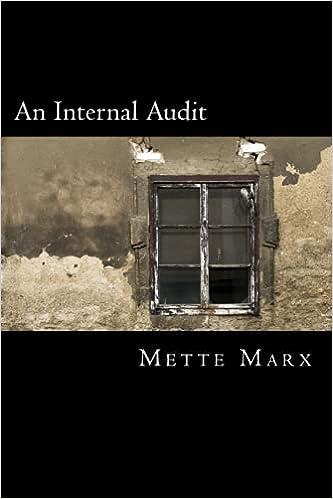Question
Consider an M/M/1 queue with an arrival rate of = 3 /hour and a service rate of /hour. Assume that it is possible to control
- Consider an M/M/1 queue with an arrival rate of = 3 /hour and a service rate of /hour. Assume that it is possible to control the service rate (e.g., vary the manpower in the service facility). Assume that the various service rates may be obtained according to the following schedule of associate costs:
- 6.00
Service rate()/hour Service cost $/hour
4.0 $3.00
- 9.00
5.5 12.00
6.0 15.00
Further assume that the cost per hour for customers waiting is (including service time) is estimated to be $10.00 per hour. Analyze the system over a period of 8 hours. (Note: it will be assumed here that the system is in steady state at the beginning of the 8-hour period of analysis.)
- Determine the optimum service level (service rate) to employ, and the associated expected total cost.
- Illustrate the decision analysis graphically, showing service cost, customer waiting cost, and total cost, for the various service rates considered.
2 question : .Suppose that calls to an IRS help center come at a rate of 60 per hour and follow a Poisson distribution. A worker manning the calls can answer an average of 5 calls per hour with the service times being exponential. Assume that 10 IRS workers are available and, when they are all busy, the phone system can keep five additional calls on hold.
- What is the probability that a caller receives a busy signal?
- What is the probability that a caller is put on hold before receiving service?
- On average, how long must a caller wait before speaking with an IRS agent?
- How many additional workers would be required if the IRS wants no more than a 5% chance of a caller receiving a busy signal?
3rd question : To promote its reputation for fast service, Earl's WhileUWait Automotive Tuneup
Shop promises to reduce a customer's bill by $0.50 for every minute the customer must
wait until his or her car's tuneup is finished. The interarrival time for Earl's customers
has an exponential probability distribution with a mean arrival rate of 4 customers per
hour.
We assume that a mechanic earns $20 per hour and can perfonn a tuneup in a time that
has an exponential probability distribution with a mean tuneup rate of 2 cars per hour.
Let us call such a mechanic a class B mechanic. In comparison to a class B mechanic, a
class A mechanic earns an hourly salary of $35 per hour and can perform a tuneup in a
time that has an exponential probability distribution with a mean tuneup rate of 3 cars
per hour. Suppose in this exercise that Earl is considering a staff consisting of either two
class A mechanics or three class B mechanics.
Should Earl hire two class A mechanics or three class B mechanics?
Please show all your calculations step by step excel process 10 Likes for these answers.
Step by Step Solution
There are 3 Steps involved in it
Step: 1

Get Instant Access to Expert-Tailored Solutions
See step-by-step solutions with expert insights and AI powered tools for academic success
Step: 2

Step: 3

Ace Your Homework with AI
Get the answers you need in no time with our AI-driven, step-by-step assistance
Get Started


